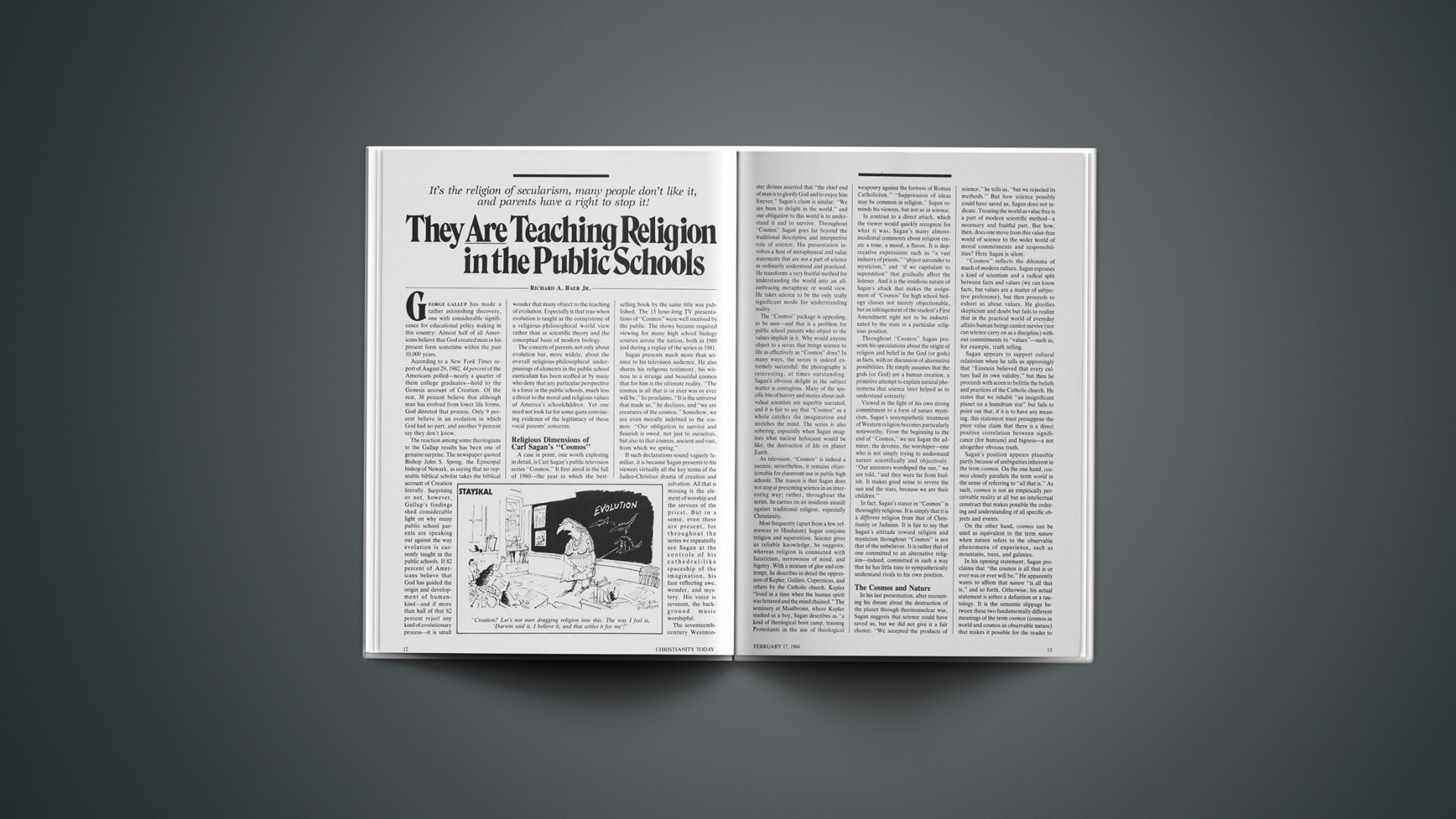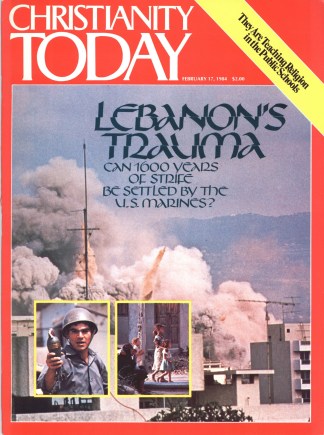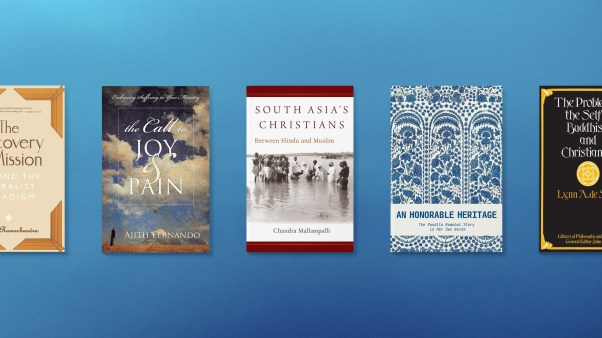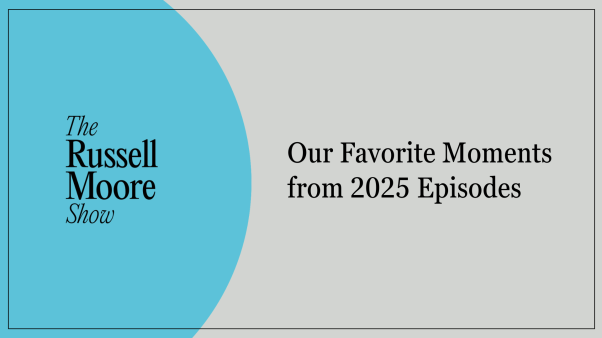George gallup has made a rather astonishing discovery, one with considerable significance for educational policy making in this country: Almost half of all Americans believe that God created man in his present form sometime within the past 10,000 years.
According to a New York Times report of August 29, 1982, 44 percent of the Americans polled—nearly a quarter of them college graduates—hold to the Genesis account of Creation. Of the rest, 38 percent believe that although man has evolved from lower life forms, God directed that process. Only 9 percent believe in an evolution in which God had no part, and another 9 percent say they don’t know.
The reaction among some theologians to the Gallup results has been one of genuine surprise. The newspaper quoted Bishop John S. Spong, the Episcopal bishop of Newark, as saying that no reputable biblical scholar takes the biblical account of Creation literally. Surprising or not, however, Gallup’s findings shed considerable light on why many public school parents are speaking out against the way evolution is currently taught in the public schools. If 82 percent of Americans believe that God has guided the origin and development of humankind—and if more than half of that 82 percent reject any kind of evolutionary process—it is small wonder that many object to the teaching of evolution. Especially is that true when evolution is taught as the cornerstone of a religious-philosophical world view rather than as scientific theory and the conceptual basis of modern biology.
The concern of parents not only about evolution but, more widely, about the overall religious-philosophical underpinnings of elements in the public school curriculum has been scoffed at by many who deny that any particular perspective is a force in the public schools, much less a threat to the moral and religious values of America’s schoolchildren. Yet one need not look far for some quite convincing evidence of the legitimacy of these vocal parents’ concerns.
Religious Dimensions Of Carl Sagan’S “Cosmos”
A case in point, one worth exploring in detail, is Carl Sagan’s public television series “Cosmos.” It first aired in the fall of 1980—the year in which the best-selling book by the same title was published. The 13 hour-long TV presentations of “Cosmos” were well received by the public. The shows became required viewing for many high school biology courses across the nation, both in 1980 and during a replay of the series in 1981.
Sagan presents much more than science to his television audience. He also shares his religious testimony, his witness to a strange and beautiful cosmos that for him is the ultimate reality. “The cosmos is all that is or ever was or ever will be,” he proclaims. “It is the universe that made us,” he declares, and “we are creatures of the cosmos.” Somehow, we are even morally indebted to the cosmos: “Our obligation to survive and flourish is owed, not just to ourselves, but also to that cosmos, ancient and vast, from which we spring.”
If such declarations sound vaguely familiar, it is because Sagan presents to his viewers virtually all the key terms of the Judeo-Christian drama of creation and salvation. All that is missing is the element of worship and the services of the priest. But in a sense, even these are present, for throughout the series we repeatedly see Sagan at the controls of his cathedral-like spaceship of the imagination, his face reflecting awe, wonder, and mystery. His voice is reverent, the background music worshipful.
The seventeenth-century Westminster divines asserted that “the chief end of man is to glorify God and to enjoy him forever.” Sagan’s claim is similar: “We are born to delight in the world,” and our obligation to this world is to understand it and to survive. Throughout “Cosmos” Sagan goes far beyond the traditional descriptive and interpretive role of science. His presentation involves a host of metaphysical and value statements that are not a part of science as ordinarily understood and practiced. He transforms a very fruitful method for understanding the world into an all-embracing metaphysic or world view. He takes science to be the only really significant mode for understanding reality.
The “Cosmos” package is appealing, to be sure—and that is a problem for public school parents who object to the values implicit in it. Why would anyone object to a series that brings science to life as effectively as “Cosmos” does? In many ways, the series is indeed extremely successful: the photography is interesting, at times outstanding. Sagan’s obvious delight in the subject matter is contagious. Many of the specific bits of history and stories about individual scientists are superbly narrated, and it is fair to say that “Cosmos” as a whole catches the imagination and stretches the mind. The series is also sobering, especially when Sagan imagines what nuclear holocaust would be like, the destruction of life on planet Earth.
As television, “Cosmos” is indeed a success; nevertheless, it remains objectionable for classroom use in public high schools. The reason is that Sagan does not stop at presenting science in an interesting way; rather, throughout the series, he carries on an insidious assault against traditional religion, especially Christianity.
Most frequently (apart from a few references to Hinduism) Sagan conjoins religion and superstition. Science gives us reliable knowledge, he suggests, whereas religion is connected with fanaticism, narrowness of mind, and bigotry. With a mixture of glee and contempt, he describes in detail the oppression of Kepler, Galileo, Copernicus, and others by the Catholic church. Kepler “lived in a time when the human spirit was fettered and the mind chained.” The seminary at Maulbronn, where Kepler studied as a boy, Sagan describes as “a kind of theological boot camp, training Protestants in the use of theological weaponry against the fortress of Roman Catholicism.” “Suppression of ideas may be common in religion,” Sagan reminds his viewers, but not so in science.
In contrast to a direct attack, which the viewer would quickly recognize for what it was, Sagan’s many almost-incidental comments about religion create a tone, a mood, a flavor. It is deprecative expressions such as “a vast industry of priests,” “abject surrender to mysticism,” and “if we capitulate to superstition” that gradually affect the listener. And it is the insidious nature of Sagan’s attack that makes the assignment of “Cosmos” for high school biology classes not merely objectionable, but an infringement of the student’s First Amendment right not to be indoctrinated by the state in a particular religious position.
Throughout “Cosmos” Sagan presents his speculations about the origin of religion and belief in the God (or gods) as facts, with no discussion of alternative possibilities. He simply assumes that the gods (or God) are a human creation, a primitive attempt to explain natural phenomena that science later helped us to understand correctly.
Viewed in the light of his own strong commitment to a form of nature mysticism, Sagan’s unsympathetic treatment of Western religion becomes particularly noteworthy. From the beginning to the end of “Cosmos,” we see Sagan the admirer, the devotee, the worshiper—one who is not simply trying to understand nature scientifically and objectively. “Our ancestors worshiped the sun,” we are told, “and they were far from foolish. It makes good sense to revere the sun and the stars, because we are their children.”
In fact, Sagan’s stance in “Cosmos” is thoroughly religious. It is simply that it is a different religion from that of Christianity or Judaism. It is fair to say that Sagan’s attitude toward religion and mysticism throughout “Cosmos” is not that of the unbeliever. It is rather that of one committed to an alternative religion—indeed, committed in such a way that he has little time to sympathetically understand rivals to his own position.
The Cosmos And Nature
In his last presentation, after recounting his dream about the destruction of the planet through thermonuclear war, Sagan suggests that science could have saved us, but we did not give it a fair chance. “We accepted the products of science,” he tells us, but we rejected its methods.” But how science possibly could have saved us, Sagan does not indicate. Treating the world as value free is a part of modern scientific method—a necessary and fruitful part. But how, then, does one move from this value-free world of science to the wider world of moral commitments and responsibilities? Here Sagan is silent.
“Cosmos” reflects the dilemma of much of modern culture, Sagan espouses a kind of scientism and a radical split between facts and values (we can know facts, but values are a matter of subjective preference), but then proceeds to exhort us about values. He glorifies skepticism and doubt but fails to realize that in the practical world of everyday affairs human beings cannot survive (nor can science carry on as a discipline) without commitments to “values”—such as, for example, truth telling.
Sagan appears to support cultural relativism when he tells us approvingly that “Einstein believed that every culture had its own validity,” but then he proceeds with scorn to belittle the beliefs and practices of the Catholic church. He states that we inhabit “an insignificant planet on a humdrum star” but fails to point out that, if it is to have any meaning, this statement must presuppose the prior value claim that there is a direct positive correlation between significance (for humans) and bigness—a not altogether obvious truth.
Sagan’s position appears plausible partly because of ambiguities inherent in the term cosmos. On the one hand, cosmos closely parallels the term world in the sense of referring to “all that is.” As such, cosmos is not an empirically perceivable reality at all but an intellectual construct that makes possible the ordering and understanding of all specific objects and events.
On the other hand, cosmos can be used as equivalent to the term nature when nature refers to the observable phenomena of experience, such as mountains, trees, and galaxies.
In his opening statement, Sagan proclaims that “the cosmos is all that is or ever was or ever will be.” He apparently wants to affirm that nature “is all that is,” and so forth. Otherwise, his actual statement is either a definition or a tautology. It is the semantic slippage between these two fundamentally different meanings of the term cosmos (cosmos as world and cosmos as observable nature) that makes it possible for the reader to miss the fact that Sagan in effect is proclaiming a form of philosophical materialism or atheism.
The problem becomes acute when we recall that nature as modern science understands it is radically different from the nature of the classical world. The latter—for instance, in Stoicism—was a teleological order that provided an appropriate context for man, not just as a physical-chemical organism, but also as a personal-purposive being. But if we limit ourselves to the nonteleological, value-free nature of modern science, it becomes very difficult to explain the origin and meaning of human freedom and moral responsibility.
I do not fault Sagan for not dealing with these issues in a systematic fashion. But to reflect virtually no awareness that such problems even exist is a serious shortcoming of “Cosmos,” one that leads to specific misleading and confusing statements such as the opening sentence of the series.
Implications For Public School Policy
Many parents of school children react with less than enthusiasm when material such as Carl Sagan’s “Cosmos” is assigned in high school science courses. What arguments can they muster in defense of their views? More important, how should public school policy—even governmental policy—treat this sensitive area? I would suggest five specific conclusions relevant to the ongoing debate over how science and religion should be dealt with in the public schools.
1. Avoid Religious Materials In Science
Any science films, texts, or curricula that attack traditional religion and/or support new “religious” positions of their own should not be used for science education in public, tax-supported schools. Indeed, to do so is to jeopardize seriously the First Amendment rights of students and, indirectly, their families.
This point is particularly critical insofar as children in public schools constitute in important respects a captive audience. The rich have the option of private schools. But except for those parents who are willing to make heroic sacrifices for their children’s education—at the same time paying both tuition fees for private schools and taxes to support public schools—most parents have little realistic choice but to accept the fact of the state’s monopoly in education. The public schools constitute the only reasonable option open to them. This makes it all the more critical that school authorities (including teachers) not exploit the state’s monopoly position to engage in sectarian religious or antireligious indoctrination.
Though in quantitative terms “Cosmos” easily qualifies as a science series, in its fundamental assumptions and overall tone it is religious throughout. As a straightforward, not-at-all subtle apology for secular materialism, it presents a position that stands in direct competition with and contradiction to the basic Judeo-Christian commitments of a large part of our society. To offer “Cosmos” and similar material immunity from the religious establishment clause of the First Amendment is to act arbitrarily and in a socially divisive manner. The public schools are not the proper place for evangelism, even when it is as attractively packaged as is Sagan’s “Cosmos.”
2. Teach Evolution The Right Way
My analysis of “Cosmos” suggests that public schools should pay more attention to how evolution is taught. In short, it should be taught as science, not as religion. Creationism has no legitimate place in the public school science curriculum, for it does not qualify as bona fide science. But equally clear, when evolution is presented in ways similar to the way it is handled in “Cosmos,” it too, strictly speaking, does not qualify as legitimate science. It rather must be seen as a curious blend of science, philosophy, and religion.
When one looks at the world as a scientist, the theory of evolution appears far and away the best explanation of the data at our disposal. I believe it is a convincing theory, at least in its broad outlines. From a scientific perspective, I also recognize the importance of emphasizing the random and nonteleological quality of mutations in their impact on the evolutionary process: The refusal of scientists to deal with questions of ultimate purpose and value has contributed strongly to the technical success of modern science.
Yet millions of thoughtful people see evolution as the natural mechanism of the Genesis story. And from a religious perspective they accept the Genesis Creation narratives as a profoundly true account of human beings in relationship to God, the world, and other human beings. Scientifically, they would agree with Sagan about the key place of evolutionary theory in modern biology. But religiously, they would also affirm that in some more basic sense the process of evolution itself is enfolded within the more ultimate context of a creator God of love and mercy, purpose and meaning.
Does this latter conviction make such believing Christians and Jews less “scientific” than Sagan? Hardly. It only means they are not philosophical materialists but rather theists—as have been many great scientists, both past and present.
3. Listen To Parental Protests
School authorities should listen more carefully to the objections of those who claim that public schools often undermine the religious and moral teachings of the home. School authorities have frequently misunderstood and even patronized groups of concerned parents when they have insisted that such curricular developments as values clarification and sex education undermine their basic moral and religious values. Even after numerous articles appeared in scholarly journals substantiating many of the parents’ complaints, school authorities still frequently ignored the substance of their arguments and instead tried to discredit the protesters by labeling them right-wing extremists, religious fanatics, and anti-intellectuals.
Actually, the shift in public schools away from a basically theistic framework (mainly Protestant-Unitarian) to humanism has been well documented. Traditionally, both public and private schools in America were thoroughly religious in orientation. “Christian” values and beliefs pervaded elementary and secondary education. As recently as the immediate post-World War II period, Bible readings and prayers were common in public schools.
Textbooks, however, have changed drastically, not just since the time of McGuffey’s Readers, but even over the past few decades. References to God and traditional religious values have become less and less common, and those that remain are often pejorative in nature. Many educators believe that all of these changes have brought the schools closer to a position of religious neutrality, thus more in line with what they see as the intent of the First Amendment. Yet a glance at the writings of the most prominent proponents of this mode of education raises serious doubts.
John Dewey, to take one of the most prominent and influential humanists of modern times, concluded A Common Faith with the following statement:
“Here are all the elements for a religious faith that shall not be confined to sect, class, or race. Such a faith has always been implicitly the common faith of mankind. It remains to make it explicit and militant.”
Likewise, Corliss Lamont, who signed both the 1933 and 1973 Humanist Manifestos, argued that humanism has many similarities with religion, among which is the fact that it is “an integrated and inclusive way of life” and “a supreme commitment.” Apparently thinking along the same line as Dewey and Lamont, the U.S. Supreme Court in Torcaso v. Watkins in 1961 referred to “those religions based on a belief in the existence of God as against those religions founded on different beliefs” and, in a clarifying footnote, includes “Secular Humanism” in the latter category.
The point is this: Education never takes place in a moral and philosophical vacuum. If the larger questions about human beings and their destiny are not being asked and answered within a predominantly Judeo-Christian framework, they will be addressed within another philosophical or religious framework—but hardly one that is “neutral.” The arrogance and philosophical implausibility of secular humanism are demonstrated by the insistence of many humanists that their position possesses such neutrality, lack of dogma, and essential rationality. It is an arrogance that also quickly becomes coercive and imperialistic, as is clearly seen in the widespread opposition among such educators toward genuine choice in education, for instance, the kind of choice that would be possible through a system of education tuition vouchers.
4. Seek Needed Educational Reform
Americans concerned about genuine freedom in teaching and learning should explore alternatives to our current state-monopoly public school system, a system in which only the rich can afford to exercise genuine educational choice. As public servants supported by tax dollars, faculty in state schools of education have a special responsibility to encourage the open and fair discussion of alternatives to the current state monopoly in education.
Unfortunately, responses to date by the public school establishment to proposals for tax credits and tuition vouchers seem far more to reflect a concern for maintaining power, jobs, and ideological control of the public schools than a genuine commitment to the welfare of students and respect for parents’ legitimate interests in their children’s educations.
Although the question of prayer and Bible readings in public schools is complex and typically oversimplified by the mass media, any comprehensive effort to make Christianity the dominant world view of the public schools cannot be supported by those who are committed to freedom of conscience and religion.
On the other hand, since most public schools today give a state-sponsored advantage to secular-humanistic ideas and values, Christians should increasingly question the legitimacy of the present system. Stephen Arons may be correct when he argues that “the present political and financial structure of American schooling is unconstitutional.”
5. Work For A Constitutional Amendment
Rather than try to “Christianize” the public schools, Christians should seek a constitutional amendment that would facilitate structural pluralism in education by guaranteeing freedom in teaching and learning. The 1948 United Nations Universal Declaration of Human Rights might serve as a model. It declares that everyone is entitled to a free education at the “elementary and fundamental stages,” but also maintains that “parents have a prior right to choose the kind of education that shall be given to their children.”
Those educators and others genuinely concerned about religious neutrality in public schools should note that nations such as Holland and Canada—in which state funds are available for religious as well as public schools—demonstrate far more neutrality regarding religion and education than does the United States. Those seriously interested in religious pluralism should consider that in societies in which religious expression is suspect, as in the Soviet Union, religious groups such as Baptists and Jews consider the survival of their traditions to be highly uncertain unless they can take a major role in educating their own children. They know that traditions do not survive without institutional support.
Similarly, American pluralism will either survive as structural pluralism, or it likely will not survive at all. And, as is true of every society, one of our key structures is the schoolhouse. To deny citizens the right (including the financial capability to exercise the right) to educate their children in schools of their own choosing is to erode seriously what is perhaps the most important single support of genuine American pluralism.
Tim Stafford is a free-lance writer living in Santa Rosa, California. He is a distinguished contributor to several magazines. His latest book is Do You Sometimes Feel Like a Nobody? (Zondervan, 1980).










